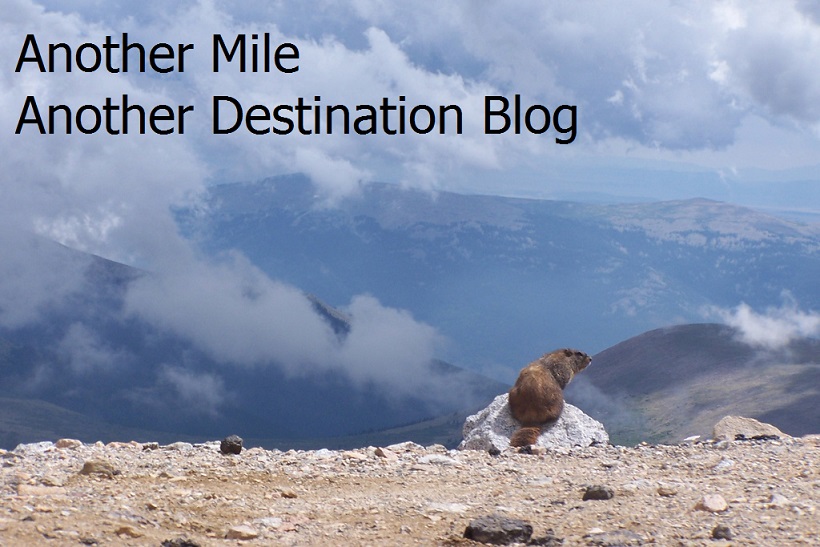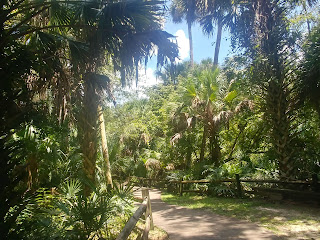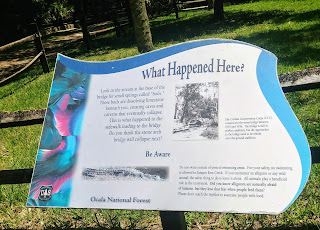“Water is the driving force of all nature.”
Leonardo da Vinci
We
took a small detour on our way home since we were not quite ready for
our vacation to end. We decided to visit one of the oldest and
best known springs in Florida on the way home. Juniper Springs was
established in 1908 and is located between Ormond Beach and Ocala,
Florida off of SR 40, which was slightly out of our way home. The
drive there was very rural and beautiful. We drove past farmlands
and then into the lush subtropical countryside of Ocala National
Forest.
When
we arrived, there was a line of cars waiting to get in. We took that
as a good sign that this spring must be nice. We pulled up to the
ticket booth and paid our fee to enter. They charge $7 a person on
week days and $10 a person on weekends. Yearly passes are also
available. We pulled into the shaded parking lot, parked, and
followed the crowds toward the spring.
Walking
down the lush garden path, we noticed some beautiful birds flitting
about in the tropical flowers, and lizards scurrying about. We
stopped at the bathhouse to change and then continued down the
winding path towards the spring. This park is beautifully manicured
and well maintained. Then the spring come into view which was a
beautiful blue color. It was smaller than I expected and full of
people having fun.
It
is a 13 million gallon natural spring that is oval shaped. The pool
is 135 feet long and 80 feet wide and is surrounded by a basin of
rock and concrete. The bottom is sand and aquatic grasses and the
temperature is a cool 72 degrees year round. It is surrounded by a
gorgeous dense canopy of palm and massive live oak trees. The water
was cold but refreshing and clear enough you could see right to the
bottom.

Sitting
on the back of the spring at the foot of the main pool is an old
Civilian Conservation Corps (CCC) mill house with a waterwheel. The
lovely mill house was built between 1935 and 1936 to be used for
electricity to this area since it was so far isolated. The
waterwheel was designed as an undershot waterwheel, meaning the water
would run under the wheel verses over. The wheel was powered by a
generator that would produce enough electricity that was needed for
the entire recreation area. The mill house no longer generates
electricity. It is now used as an exhibit showing the history of the
CCC and how they helped develop the springs for public use.
We
walked down the dense trail that led to Juniper Creek which makes its
way to Lake George and then into the Saint Johns River Basin. The
water was crystal clear with a lovely sandy bottom. You can Kayak
or canoe on this creek which goes past many bubbling springs gushing
out of the earths surface. There is also a ¾ of a mile hiking
trail each way that was closed the day we were there.
This park offers swimming, 24 picnic tables, 12 grills, four picnic
shelters, concession building, amphitheater, and a campground with 79
sites. It is a great place to visit for a day trip. If you want a
picnic table or grill, I would suggest you get there early.
We
had a nice couple hours there before continuing our trip home. It
was worth the visit. Go check it out. Till next time. Bye for
now.






























